Concise syntheses of 13-methylprotoberberine and 13-methyltetrahydroprotoberberine alkaloids
Wenchng Chen,Xiofen Yi ,Hongmin Qu,Yu Chen,Pei Tng ,*,Fener Chen,b,c,*
a Sichuan Research Center for Drug Precision Industrial Technology,West China School of Pharmacy,Sichuan University,Chengdu 610041,China
b Engineering Center of Catalysis and Synthesis for Chiral Molecules,Department of Chemistry,Fudan University,Shanghai 200433,China
c hanghai Engineering Center of Industrial Asymmetric Catalysis for Chiral Drugs,Shanghai 20 0 433,China
Keywords:13-Methylprotoberberine 13-Methyltetrahydroprotoberberine One-pot metal-free sequence Asymmetric hydrogenation
ABSTRACT The concise syntheses of eight 13-methylprotoberberine(13-MePB)and eight enantioenriched 13-methyltetrahydroprotoberberine(13-MeTHPB)alkaloids have been achieved in a tactically modular fashion.This synthetic work features a one-pot metal-free Pictet-Spengler/Friedel-Crafts hydroxyalkylation/dehydration/oxidation sequence and a following highly enantioselective Ir-catalyzed hydrogenation.Given such brevity and modularity,our developed synthetic route would be greatly beneficial to the effi-cient syntheses of existing natural products and new fully synthetic variants of 13-MePB and 13-MeTHPB family.
The protoberberine(PB)and tetrahydroprotoberberine(THPB)alkaloids are a group of complex polycyclic isoquinoline natural products with densely functionalized nucleus and are mainly isolated fromBerberidaceae,Fumariaceae,Papaveraceae,Annonaceae[1–3],as exemplified by the archetypal members berberine 1 and (–)-canadine 2 (Fig.1).Many members of this family have shown a wide range of biological activities,including antimicrobial[4,5],anticancer[6],anti-inflammatory [7,8],anti-Alzheimer’s disease[9,10],antiviral[11],antimalarial[12,13]and antihyperlipidemic[14],and berberine 1 has been widely used clinically as an antibacterial drug for the treatment of infectious diarrhea and other gastrointestinal diseases in China and other Asian countries over the last several decades.Among this family,13-methylprotoberberine(13-MePB)alkaloids exhibit a characteristic scaffold containing a methyl group at C13-position(e.g.,3a and 3b).Structurally,13-MePB alkaloids feature a 13-methyl-5,6-dihydrodibenzo[a,g]quinolizinium scaffold with oxygen-containing functionalities at the C2,C3-positions of the A ring,and C9,C10 or C10,C11-positions of the D ring.While,the corresponding tertiary amine natural products,namely 13-methyltetrahydroprotoberberine(13-MeTHPB)alkaloids(e.g.,4a and 4b),embed a saturated C ring,thereby bearing two consecutive stereogenic centers at C13/C14-positions.Importantly,the 13-MePB and 13-MeTHPB alkaloids have proven to have better performance than conventional PB and THPB(without 13-methyl group)in certain types of bacteria species,human cancer cell lines and inflammatory diseases[13,15],thus indicating the beneficial effects of 13-methyl on biological activities.
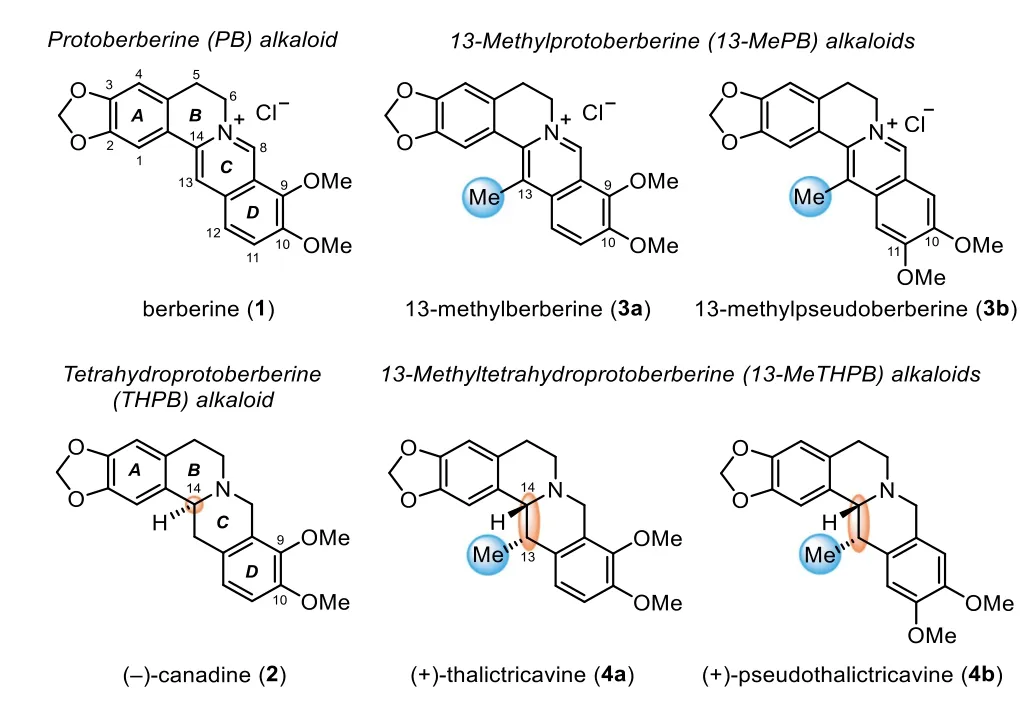
Fig.1.Representative PB,THPB,13-MePB and 13-MeTHPB alkaloids.
In light of their promising biological activities and intriguing architectural features,13-MePB and 13-MeTHPB alkaloids have been privileged targets of synthetic and medicinal chemists for decades.However,the C13 substitution coupled with the C13/C14cisstereochemical characteristic give rise to more synthetic challenges.The semisynthetic sequence involving acetonation,alkylation with MeI and non-selective reduction was among the traditional transformations towards 13-MePB and 13-MeTHPB alkaloids(Scheme 1a)[16].Cushman,Taylor and Seidel separately developed Mannich-type cyclization strategies to construct 13-MeTHPB alkaloids[17–19],but these syntheses either delivered racemic products or needed the help of resolution approach.Recently,some synthetic methodologies based on transition metal catalyzed cyclization were reported in 13-MePB scaffolds assembly,such as Cheng’s Rh-catalyzed C-H bond activation[20]and Donohoe’s Pa-catalyzed enolate arylation[21].While Tong and coworkers documented an enantioselective synthesis of 13-MeTHPB alkaloids featuring a new Cucatalyzed asymmetric redox-A3reaction followed by Pd-catalyzed cyclization,they also investigated the one step oxidation of racemic 13-MeTHPB to 13-MePB(Scheme 1b)[22,23].Moreover,Cozzi and colleagues developed an organocatalytic reaction to synthesize 13-MeTHPB with 3.5:1drin the formation of the crucial C13/C14 relative stereochemistry(Scheme 1c)[24].Most recently,Hailes and coworkers achieved syntheses of enantioenriched 13-MeTHPBs with opposite absolute configurations to natural members by utilizing their developed chemoenzymatic cascade approach,and further forged corresponding 13-MePBs through single step,albeit with comparatively low isolated yields(Scheme 1d)[25].Despite these impressive advances,many methods usually required precisely prepared substrates,and/or precious metals,harsh reactionconditions,and lengthy chemical processes,complicating reaction work up and making scale-up challenging and cumbersome.Therefore,it is highly desirable to develop an alternative route that utilizes low-cost chemical inputs to structurally diverse 13-MePB and 13-MeTHPB alkaloids with highly atom-economical manner.Motivated by these requirements,we embarked on a research program aimed at the exploration of a practical approach that can access both 13-MePB and 13-MeTHPB alkaloids in a streamlined synthesis manner.Strategically inspired by synthetic studies on berberine by the research groups of Clift and Jiang[26,27],we conceived that a one-pot Pictet-Spengler/Friedel-Crafts hydroxyalkylation/dehydration/oxidation sequence of secondary amine hydrochloride 5 and methylglyoxal 6 could be a straightforward and completely atom-economical approach for constructing 13-MePB alkaloids(Scheme 1e).It is well known that asymmetric catalytic hydrogenations of imines and enamines are among the most green and powerful approaches for the elaboration of chiral amine moieties in natural products[28].Therefore,if the subsequent asymmetric hydrogenation of 13-MePB scaffolds could be manipulated with high-level enantiocontrol,it would be possible for us to access the corresponding 13-MeTHPB alkaloids.In fact,we are aware that this transformation could be challenging since Tong disclosed only one example of Noyori transfer hydrogenation of 13-MePB with 20%eeand speculated that the C13 substitution generated a significant influence on the enantioselectivity of the hydrogenation.Our group previously described an Ir-catalyzed hydrogenation approach of dihydroprotoberberine cores to enantioenriched THPB alkaloids[29].We envisaged that this approach could be fascinating alternative and expect to employ the Ircatalyzed asymmetric hydrogenation of 13-MePBs for establishing the more challenging C13/C14cisstereochemistry of 13-MeTHPBs.In the following sections,we describe our synthetic strategy and de novo syntheses of the aforementioned alkaloids in detail.
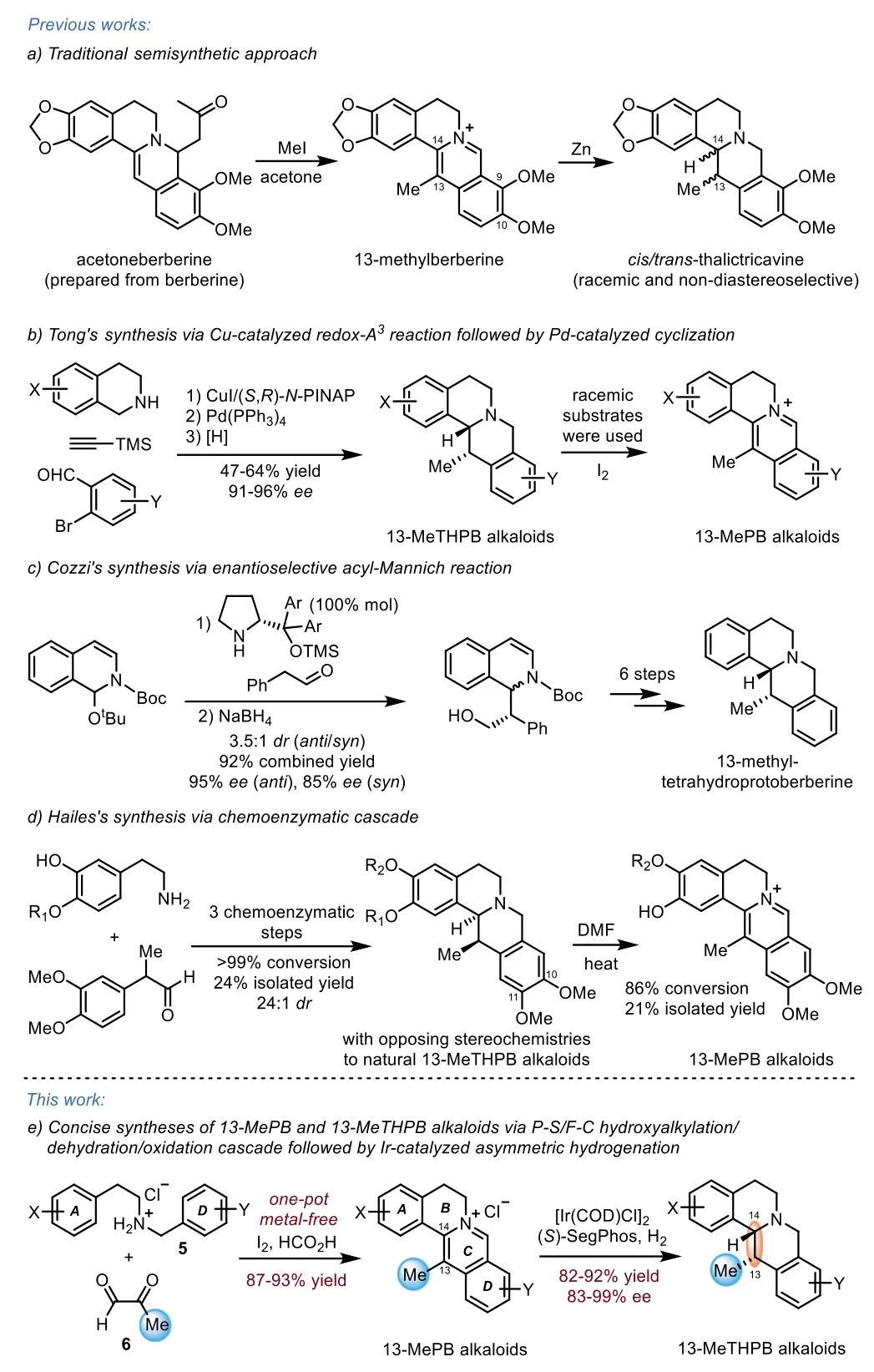
Scheme 1.Previous syntheses and our strategy for 13-MePB and 13-MeTHPB alkaloids.
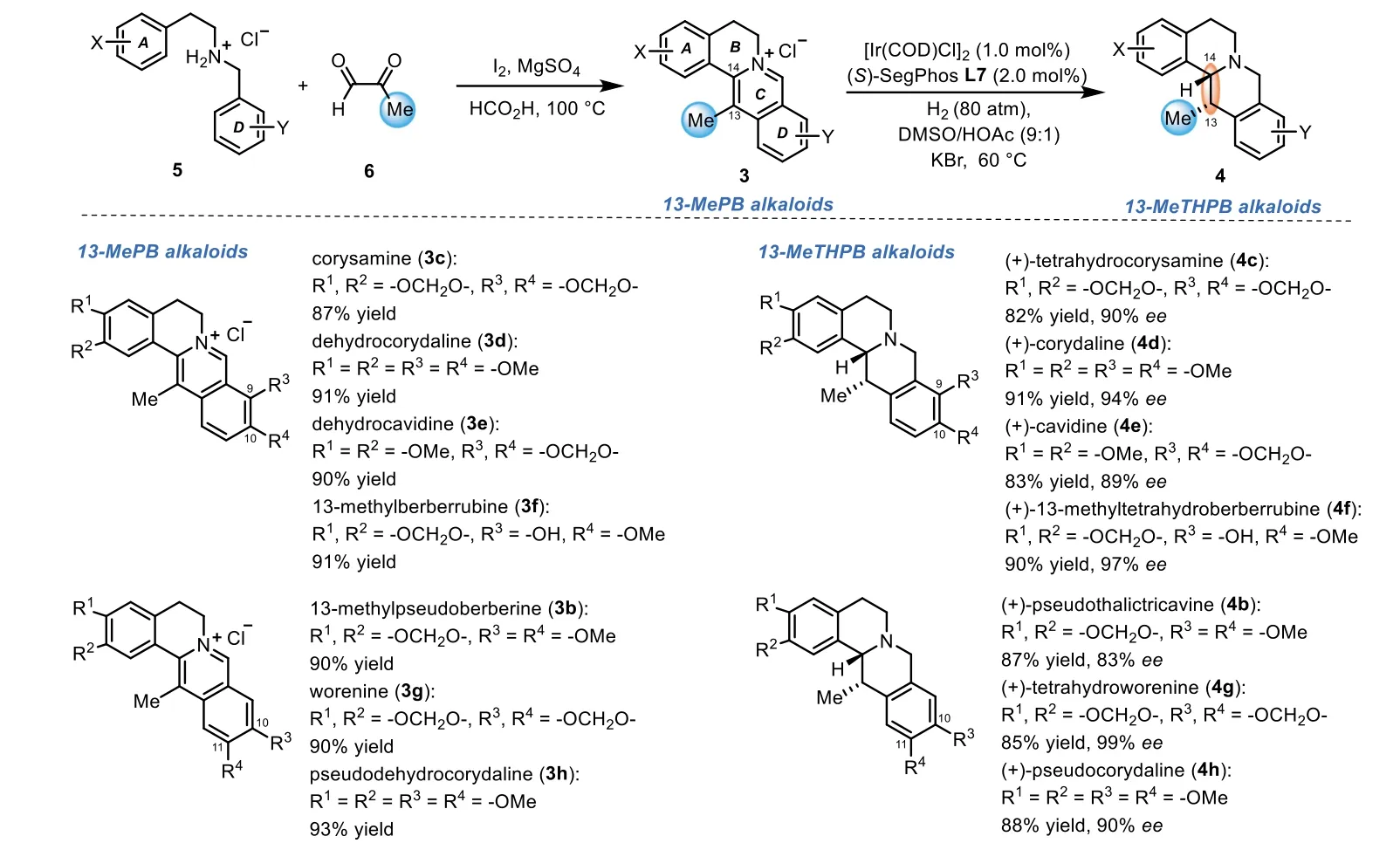
Scheme 2.Concise syntheses of 13-MePB and 13-MeTHPB alkaloids.
At the outset of this study,the target oriented model using amine hydrochloride 5a and methylglyoxal 6 as substrates was set up for our synthetic studies for constructing the representative member 13-methylberberine 3a(Table 1).To our delight,the desired one-pot sequence could be efficiently employed for the pivotal Pictet-Spengler/Friedel-Crafts hydroxyalkylation/dehydration/oxidation cascade of 5a(preparedviaour reported continuous flow approach)in HCO2H with excess methylglyoxal 6,CuSO4,and NaCl at 100°C in sealed tube,smoothly providing 13-methylberberine 3a in 52%yield(Table 1,entry 1).While adding conc.HCl could not improve the efficiency(entry 2).However,changing CuSO4to FeCl3resulted in a significantly increased yield(entry 3).Further optimization was carried out and we were delighted to find that the combination of I2and desiccant MgSO4was more efficient and provided 3a with a reproducibly good yield(90%)(entry 4).Obviously,this present method provides a practical,straightforward and cost-effective entry for the synthesis of 13-MePB alkaloids.
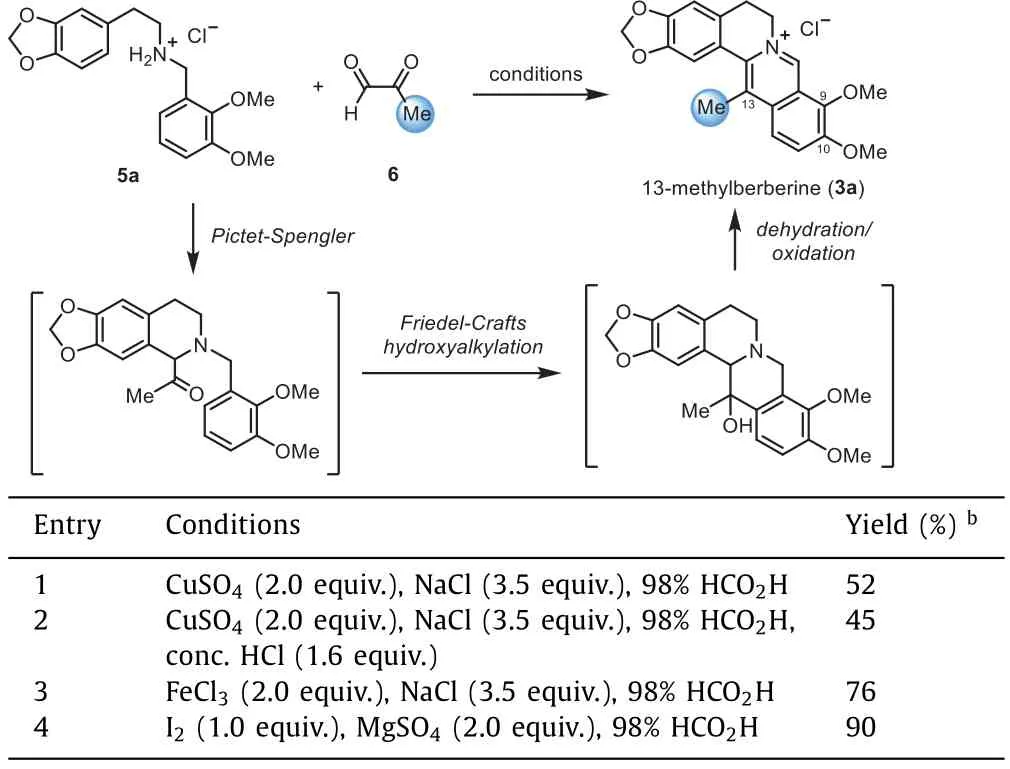
Table 1 One-pot synthesis of 13-MePB(3a)by Pictet-Spengler/Friedel-Crafts hydroxyalkylation/dehydration/oxidation cascade.a
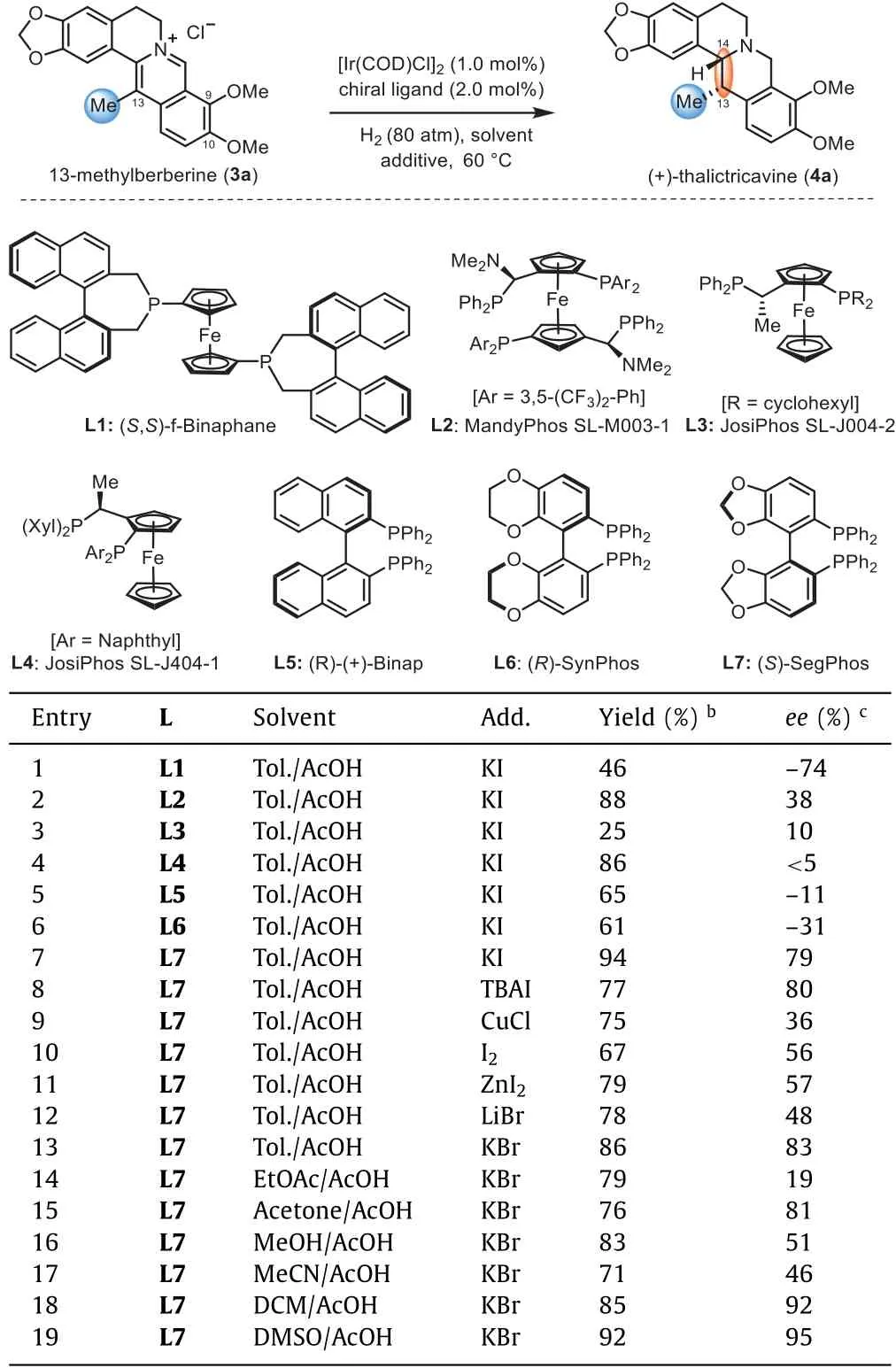
Table 2Ir-catalyzed asymmetric hydrogenation of 13-methylberberine(3a).a
After confirming the robust one-pot procedure to access 3a,we then focused our attention on the elaboration of Ir-catalyzed asymmetric hydrogenation process.As mentioned before,accomplishing the installation of two adjacent stereocenters at the C13/C14 positions could be the most challenging part of the entire research work.Based on our previous studies,with 13-MePB alkaloid 3a as model substrate for synthesizing(+)-thalictricavine 4a,a series of chiral ligands incorporating with[Ir(COD)Cl]2were investigated in toluene/AcOH using KI as additive and 80 atm of hydrogen at 60°C.It was observed that(S,S)-f-binaphane L1,which was proven to be the optimal ligand in our enantioselective syntheses of THPB and eburnamine-vincamine alkaloids[29,30],just gave an unsatisfied reactivity and enantioselectivity outcomes(46%yield,–74%ee)in this case(Table 2,entry 1).Next,ferrocene-based ligands L2-L4[31]and biphosphine ligands L5-L7[32,33]were investigated,and only(S)-SegPhos L7 gave a promising result,leading to 4a in 94%yield and 79%ee(entries 2–7).Inspired by this result,we then continued the condition experiments with L7.First,the additives TBAI,CuCl,I2,ZnI2,LiBr and KBr were screened(entries 8–13),among which the KBr was proven to be the efficient additive owing to delivering 86%yield and 83%ee(entry 13).Subsequent solvent screening showed that EtOAc,acetone,MeOH and MeCN could not improve the efficiency(entries 14–17).While,using DCM resulted in a comparable reactivity(85%yield)and an increased enantioselectivity(92%ee)(entry 18).Ultimately,DMSO showed obvious advantage and provided the best result in terms of yield and enantioselectivity(92%yield,95%ee).
With the optimized Pictet-Spengler/Friedel-Crafts hydroxy–alkylation/dehydration/oxidation cascade and Ir-catalyzed asymmetric hydrogenation conditions in hand,we next investigated the scope of the above robust and streamlined approach for sequential syntheses of 13-MePB and 13-MeTHPB natural products(Scheme 2).First,several different 13-MePBs 3 were modularly constructed by the assemblyline synthesis from readily available amine hydrochloride building blocks 5 and commercially available methylglyoxal 6(see Supporting information for details).As summarized in Scheme 2,under the optimized one-pot condition,a series of building blocks 5 with oxygencontaining functionalities at the C2,C3-positions and C9,C10 or C10,C11-positions have all been proved to be feasible substrates,thus affording the desired products,13-methylpseudoberberine 3b,corysamine 3c,dehydrocorydaline 3d,dehydrocavidine 3e,13-methylberberrubine 3f,worenine 3g,pseudodehydrocorydaline 3h and in good yields(87%−93% yields).Subsequently,these diversified 13-MePBs also performed well under the standard asymmetric hydrogenation conditions,affording the corresponding 13-MeTHPBs,including(+)-pseudothalictricavine 4b,(+)-tetrahydrocorysamine 4c,(+)-corydaline 4d,(+)-cavidine 4e,(+)-13-methyltetrahydroberberrubine 4f,(+)-tetrahydroworenine 4g,(+)-pseudocorydaline 4h and in good yields with excellent enantioselectivities(82%−92%yields and 83%−99%ee).Of note,these results demonstrated the power of this strategy due to addressing the formidably challenging issue on straightforward hydrogenation of 13-MePBs.
In conclusion,a series of 13-MePBs and enantioenriched 13-MeTHPBs alkaloids were expeditiously synthesized from readily obtained building blocks.A sustainable and successive sequence was systematically investigated,in which the one-pot procedure involving Pictet-Spengler/Friedel-Crafts hydroxyalkylation/dehydration/oxidation cascade was particularly employed to construct the 13-MePB cores,and the robust Ir/(S)-SegPhos catalyzed hydrogenation were divergently implemented at late stage to access the critical chiral amine units in the corresponding 13-MeTHPB alkaloids.Our approach not only enabled the scalable total syntheses of 13-MePBs and 13-MeTHPBs,but also served as a platform for flexibly probing other related isoquinoline alkaloids.
Declaration of competing interest
The authors declare that they have no known competing financial interests or personal relationships that could have appeared to influence the work reported in this paper.
Acknowledgments
This work was supported by the National Natural Science Foundation of China(No.U21A20278)and Sichuan Science and Technology Program(No.2021YJ0221).
Supplementary materials
Supplementary material associated with this article can be found,in the online version,at doi:10.1016/j.cclet.2022.04.047.
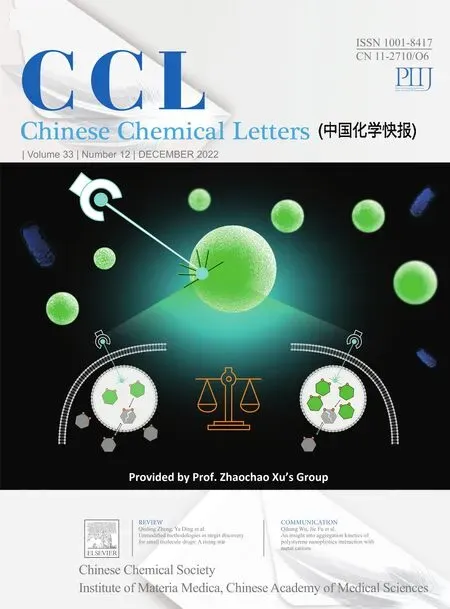 Chinese Chemical Letters2022年12期
Chinese Chemical Letters2022年12期
- Chinese Chemical Letters的其它文章
- Diverse strategic approaches en route to Taxol total synthesis
- Recent advances in gold-complex and chiral organocatalyst cooperative catalysis for asymmetric alkyne functionalization
- Unmodified methodologies in target discovery for small molecule drugs:A rising star
- Recent advances in single-crystalline two-dimensional polymers:Synthesis,characterization and challenges
- Environmental applications of graphene oxide composite membranes
- Recent advances in the application of metal organic frameworks using in advanced oxidation progresses for pollutants degradation
